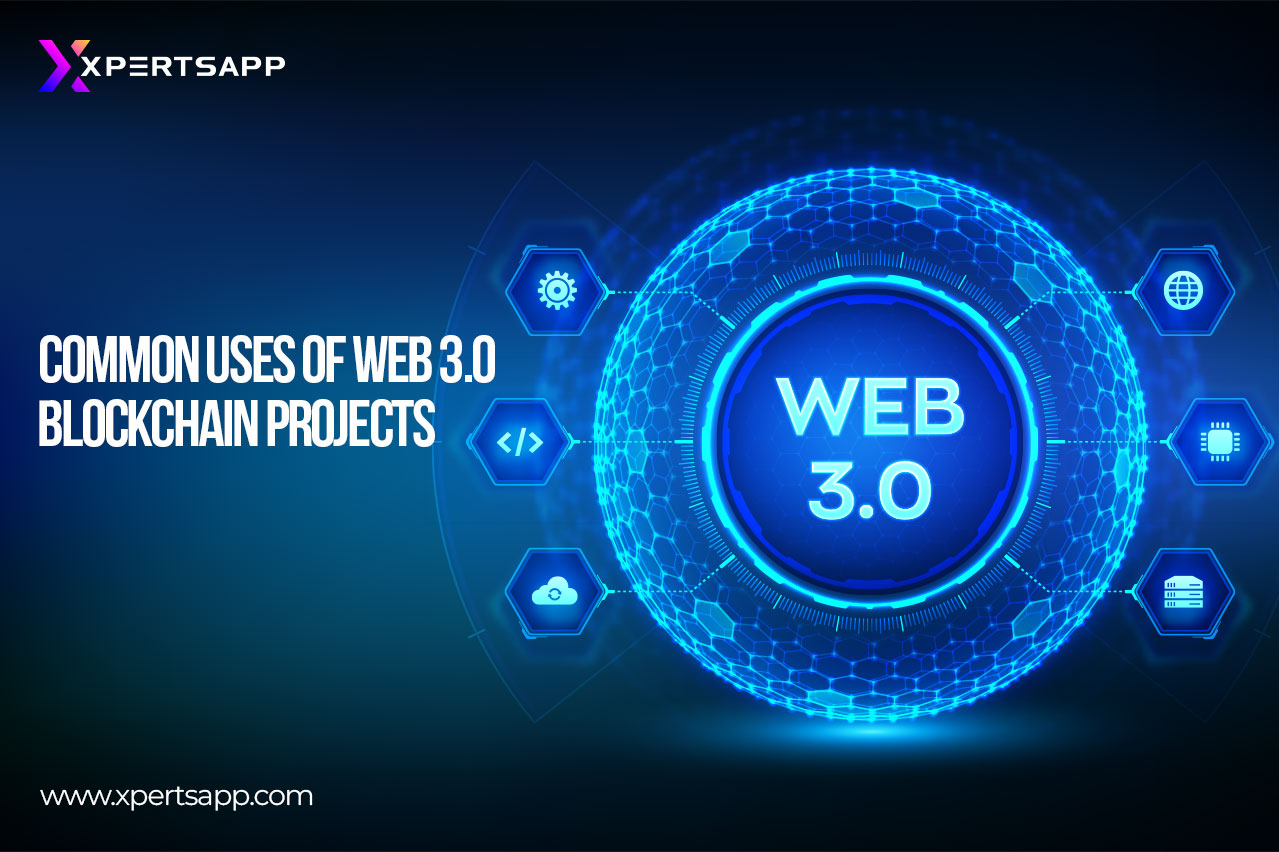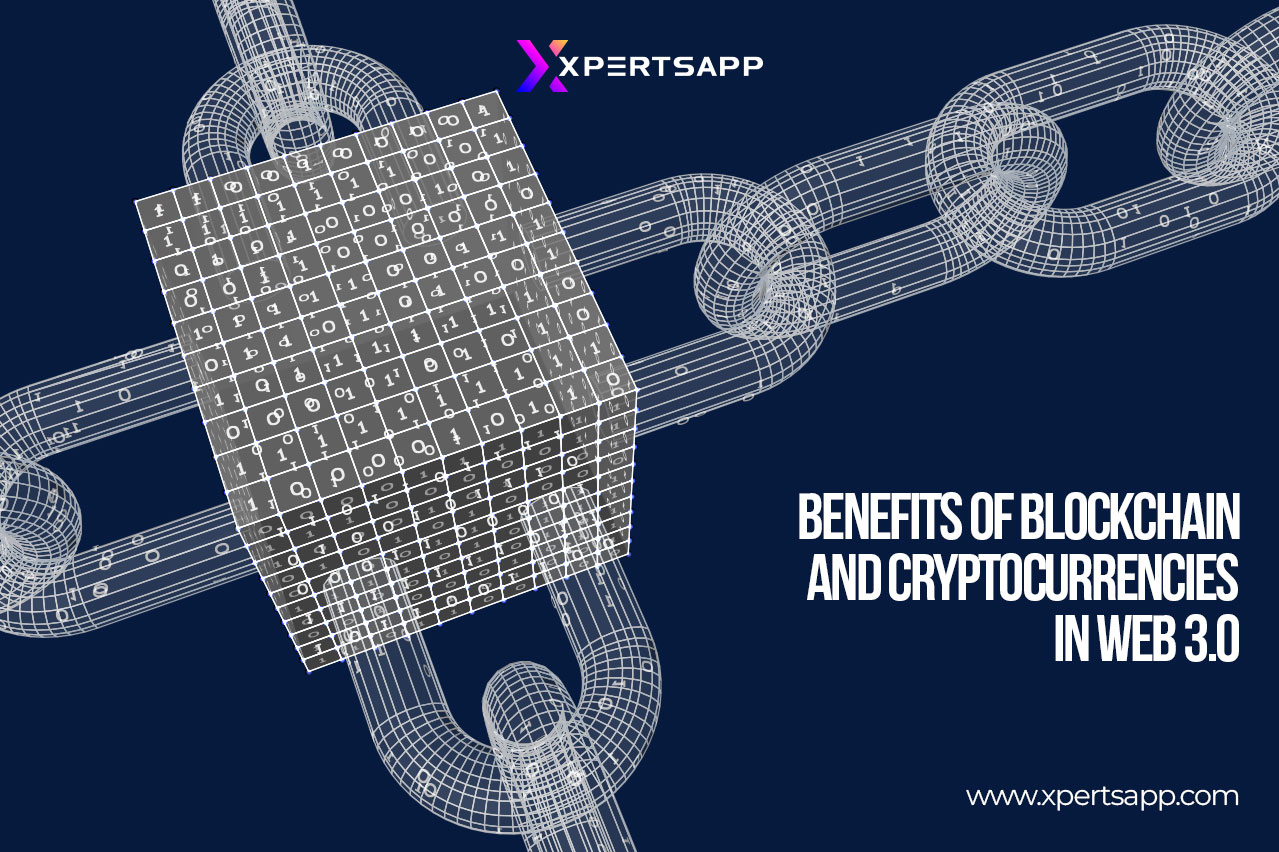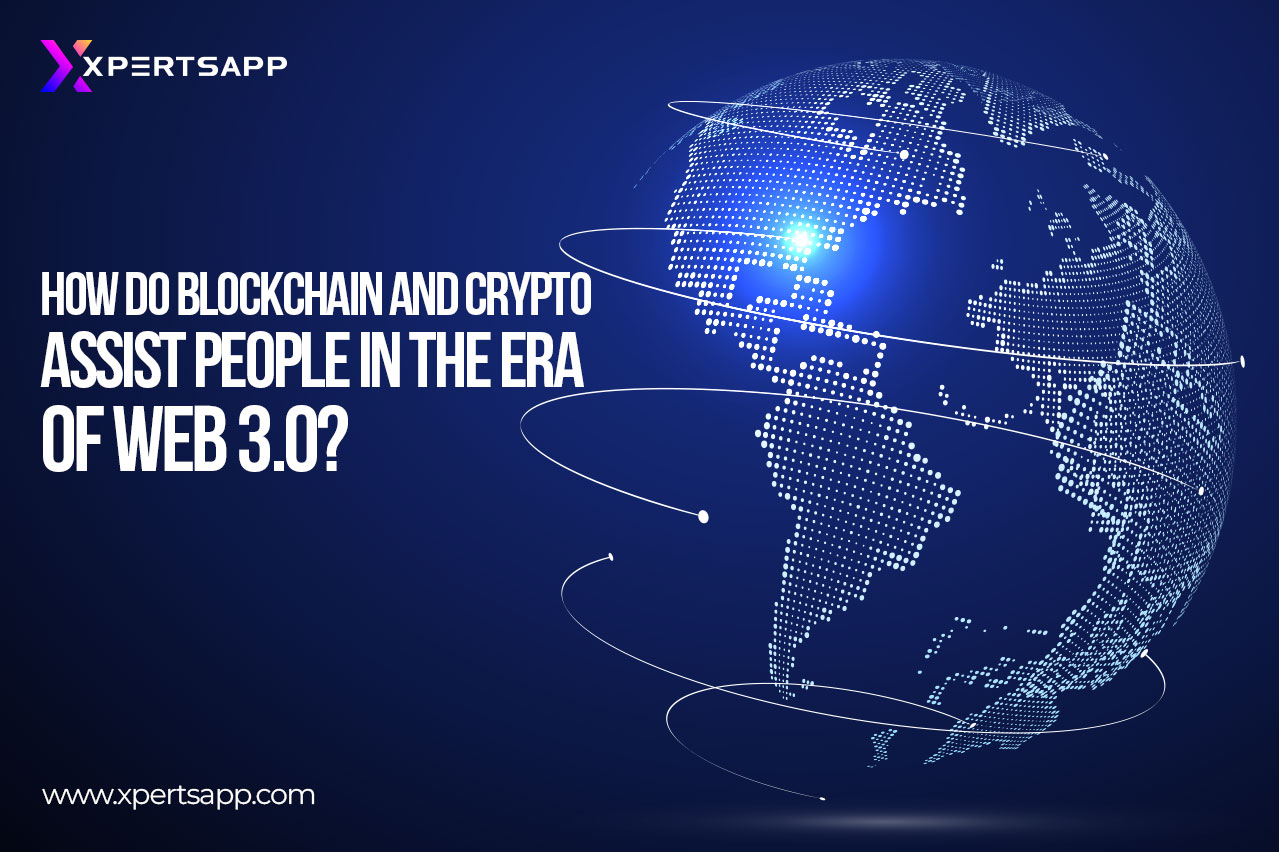Common Uses of Web 3.0 In Blockchain Technology
by: XpertsApp Team
-6589 views

In web 3.0, blockchain technology is essential; it makes it possible to create an open and trustful ecosystem. Additionally, the Blockchain’s decentralized consensus process can support flexible user engagement without the need for centralized control.
Web 3.0 is a new era of the Internet to bring innovation and uniqueness, with the upcoming version of the web being user-friendly. The third iteration or interpretation of the Internet referred to as Web 3.0 (also known as web3), integrates data in a decentralized manner to provide a quicker and more individualized user experience.
Its intrinsic decentralization properties enable anybody to store information. Blockchain and cryptocurrencies are well-positioned to become key Web 3.0 technologies.
Benefits of Blockchain Technology and Cryptocurrencies With Web 3.0

Blockchain Technology And Authority:
Cryptocurrency currently provides consumers with tools like self-custodial crypto wallets that let them store their money without the help of intermediaries. Users can also connect their wallets to decentralized apps to use their funds in various ways or display their digital goods.
Anyone can use a public ledger that is open to the public to confirm who owns these monies and objects.
Decentralization:
As was already said, one of the main issues with Web 2.0 is the concentration of information and power in the hands of a group of significant players. Blockchain and cryptocurrencies enable a more equitable allocation of knowledge and ability, which can decentralize Web 3.0.
Web 3.0 could use publicly distributed ledgers powered by Blockchain to promote greater decentralization and transparency.
Absence of Permission:
Blockchain-based initiatives swap out traditional businesses’ proprietary systems for publicly accessible code. The blockchain applications’ uncensored design makes it possible for anybody worldwide to access and use them without limitations.
Lack of Trust:
Blockchain and cryptocurrency do away with the need to have faith in any intermediaries, be they banks or private individuals. Users of Web 3.0 can conduct transactions without having to rely on any other parties besides the network itself.
Payment Rails:
Web 3.0’s infrastructure for digitally native payments may be based on cryptocurrencies. Due to their true borderless and lack of intermediaries, digital assets have the potential to enhance the costly and cumbersome Web2 payment infrastructure.
Freedom of Speech
Blockchains are made to be censorship-resistant, which means that no party may agree to change the transaction record. It is nearly impossible to remove a record from the Blockchain after it has been added.
This function might protect many forms of expression against corporate and governmental restrictions.
Learn More About Apps: How Much Does It Cost to Make an App?
How Do Blockchain And Crypto Assist People In The Era Of Web 3.0?

Web 3.0 may rely on technology unrelated to Blockchain or cryptocurrencies. For instance, the new internet era may also depend on technologies like augmented reality (AR), virtual reality (VR), the Internet of things (IoT), and the Metaverse.
These technologies and solutions could contribute to making the Internet more immersive and interconnected with the real world, even though the Blockchain might work more on the infrastructure side of Web3. Cryptocurrency may offer more than just payment rails for the digital age. Utility tokens can open up a world of Web 3.0-related application cases.
Non-fungible tokens (NFTs) may also validate ownership and identity in the digital space while maintaining user sovereignty over their data. There are aspects through which Blockchain and crypto would influence or play a significant role taking part in the development of web 3.0.
Blockchain As A Pillar
The users might not even be aware of it, but blockchain technology has the potential to become one of the pillars of Web 3.0.
People won’t think twice about the underlying infrastructure if the blockchain-based applications are simple to use and understand, much as we hardly ever think about the data servers and internet protocols that underpin the social media platforms we use daily.
Digital Asset
Users may be able to display digital collectibles to other users via NFTs, which also support the creation and upkeep of their digital identities.
They also help several crucial procedures in online gaming, among other practical uses.
Digitalized Authority
Web 3.0 users can use decentralized autonomous groups (DAOs) to coordinate and enforce collective action using Blockchain and cryptocurrencies.
DAOs like UniSwap let people band together without a single central authority to pursue a common interest. Instead, a vote among token holders decides the optimal course of action.
Decentralized Ecosystem
Additionally, a blockchain makes the votes and activity visible. DAOs can encourage Web 3.0 to become more decentralized, open, and community-focused.
Conclusion
Beyond cryptocurrencies, blockchain technology’s capabilities allow for a wide range of other applications in the web 3.0 era. For example, it enables the tokenization of financial instruments like bonds, stocks, and derivatives, as well as the traceability of goods along a value chain and document notarization.
Blockchain is paving the way for how people and organizations define new business rules and exchange assets in this new era of Web 3.0. Replacing trust with a tamper-proof and self-enforcing technology protocol; similarly, the Internet changed the world by giving democratic access to information.
If you want to bring your creative idea for a blockchain app to life, XpertsApp has experienced blockchain developers who can guide you through the process.